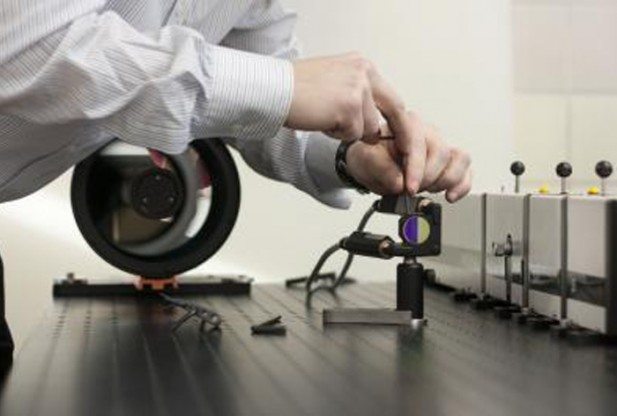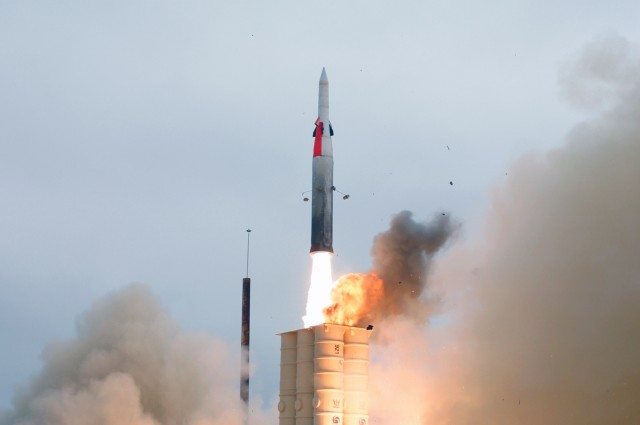People like to keep a safe distance from explosive substances, but in order to analyze them, close contact is usually inevitable.
At the Vienna University of Technology, a new method has now been developed to detect chemicals inside a container over a distance of more than a hundred meters. Laser light is scattered in a very specific way by different substances. Using this light, the contents of a nontransparent container can be analyzed without opening it.
“The method we are using is Raman-spectroscopy”, says Professor Bernhard Lendl (TU Vienna). The sample is irradiated with a laser beam. When the light is scattered by the molecules of the sample, it can change its energy. For example, the photons can transfer energy to the molecules by exciting molecular vibrations.
This changes the wavelength of the light – and thus its colour. Analyzing the colour spectrum of the scattered light, scientists can determine by what kind of molecules it must have been scattered.
Measuring over Great Distances – with Highest Precision
“Until now, the sample had to be placed very close to the laser and the light detector for this kind of Raman-spectroscopy”, says Bernard Zachhuber. Due to his technological advancements, measurements can now be made over long distances. “Among hundreds of millions of photons, only a few trigger a Raman-scattering process in the sample”, says Bernhard Zachhuber.
These scattered particles of light are scattered uniformly in all directions. Only a tiny fraction travel back to the light detector. From this very weak signal, as much information as possible has to be extracted. This can be done using a highly efficient telescope and extremely sensitive light detectors.
In this project (funded by the EU) the researchers at TU Vienna collaborated with private companies and with partners in public safety, including The Spanish Guardia Civil who are are extremely interested in the new technology. During the project, the Austrian military was also involved.
On their testing grounds the researchers from TU Vienna could put their method to the extreme. They tested frequently used explosives, such as TNT, ANFO or RDX. The tests were highly successful: “Even at a distance of more than a hundred meters, the substances could be detected reliably”, says Engelene Chrysostom (TU Vienna).
Seeing Through Walls
Raman spectroscopy over long distances even works if the sample is hidden in a nontransparent container. The laser beam is scattered by the container wall, but a small portion of the beam penetrates the box. There, in the sample, it can still excite Raman-scattering processes. “The challenge is to distinguish the container’s light signal from the sample signal”, says Bernhard Lendl.
This can be done using a simple geometric trick: The laser beam hits the container on a small, well-defined spot. Therefore, the light signal emitted by the container stems from a very small region. The light which enters the container, on the other hand, is scattered into a much larger region.
If the detector telescope is not exactly aimed at the point at which the laser hits the container but at a region just a few centimeters away, the characteristic light signal of the contents can be measured instead of the signal coming from the container.
The new method could make security checks at the airport a lot easier – but the area of application is much wider. The method could be used wherever it is hard to get close to the subject of investigation.
It could be just as useful for studying icebergs as for geological analysis on a Mars mission. In the chemical industry, a broad range of possible applications could be opened up.
Source: Vienna University of Technology











